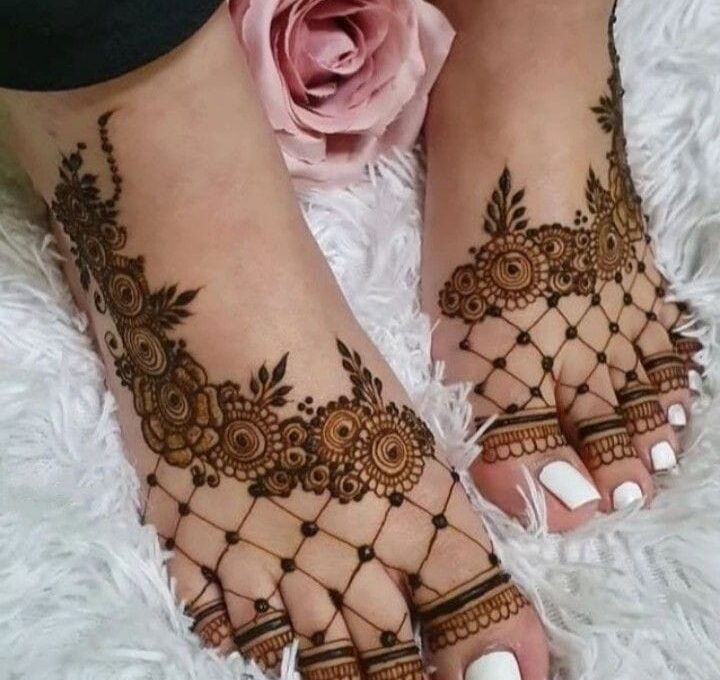The art of feet mehndi has been a part of ancient traditions for thousands of years, with historical evidence suggesting its presence in cultures like the Egyptians and the Mughals.
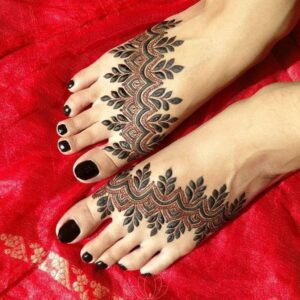
In many regions, the art of henna on the feet represents protection, prosperity, and a blessing for new beginnings. The soles of the feet, especially, are seen as spiritual connections to the earth, making the application of henna a symbolic act of grounding and blessing.
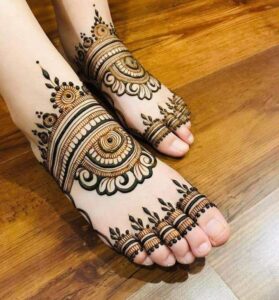
In Indian weddings, the bride’s feet adorned with mehndi represent a journey of walking into a new phase of life with grace and beauty. Similarly, in Arabic cultures, mehndi on the feet is worn during celebrations like Eid, representing joy and festivity.
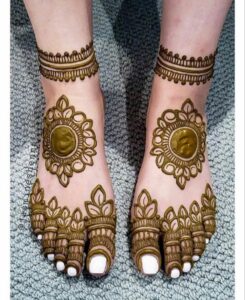
The art of mehndi designs often hold religious and spiritual significance, incorporating symbols like flowers, paisleys, and even sacred geometry.
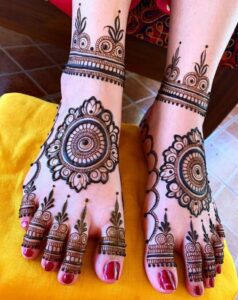
Mehndi on the feet not only enhances the beauty of the foot but creates a captivating allure as the design complements the natural curvature of the arches, toes, and heels. The elegance of a well-done mehndi design can make every step seem like a dance, with the intricate patterns capturing the flow of movement.
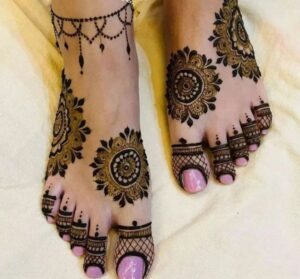
Whether you’re wearing sandals, barefoot, or traditional attire, the art of beautifully designed mehndi pattern on the feet adds a touch of sophistication and style.

One of the most popular motifs for feet mehndi is floral designs. These range from large flowers covering the top of the foot to small, delicate buds running along the sides and toes.

Mandalas, known for their symmetrical and circular patterns, are commonly applied to the tops of the feet. These intricate designs evoke a sense of balance and spiritual harmony, reflecting deeper meanings and a connection to the universe.
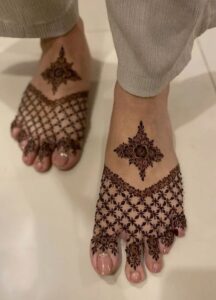
Arabic mehndi for feet tends to be more sparse, with bold lines and negative spaces. This design style features flowing patterns with vine-like motifs, emphasizing simplicity yet elegance.
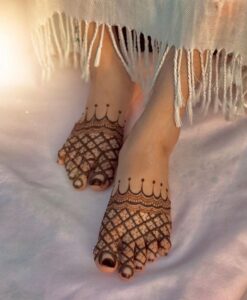
The art of Arabic mehndi is famous for its artistic flow. It wraps beautifully around the foot, following the curves of the arches and ankles.
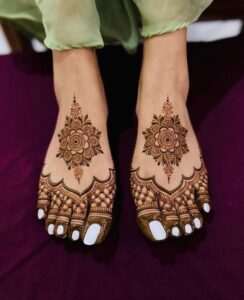
A trending style in modern feet mehndi is the anklet or jewelry-inspired patterns. These designs mimic the look of traditional foot jewelry, with chains, charms, and beaded designs wrapping around the ankles.

Paisleys and geometric shapes often dominate feet mehndi designs, especially in South Asian traditions. Paisleys symbolize fertility and abundance, making them a staple in bridal mehndi.
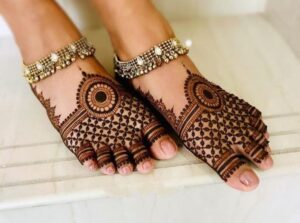
The art of feet mehndi is not only for brides alone. While weddings are a prominent time for this art, many women apply it for other occasions. In some cultures, applying mehndi to the feet can even be an everyday beauty practice, symbolizing self-care and personal adornment.
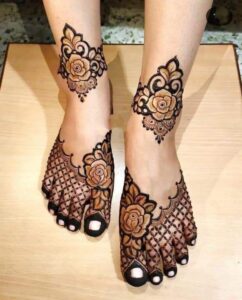
Feet mehndi is more than just a form of adornment; it is an expression of art, culture, and tradition. Whether it’s the delicate swirls of Arabic designs or the bold geometry of Indian patterns. This art form celebrates the beauty of movement, grace, and femininity.

Walking in style with henna-decorated feet adds not only to the aesthetic appeal. But also connects the wearer to a long history of artistic and cultural heritage.
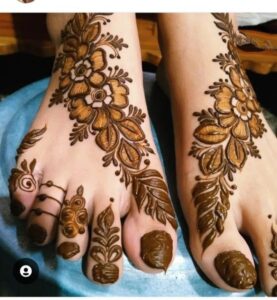
The intricate detailing on feet not only enhances the bride’s overall look on special occasions like weddings and festivals. It also reflects the deep-rooted cultural significance associated with this age-old tradition.

